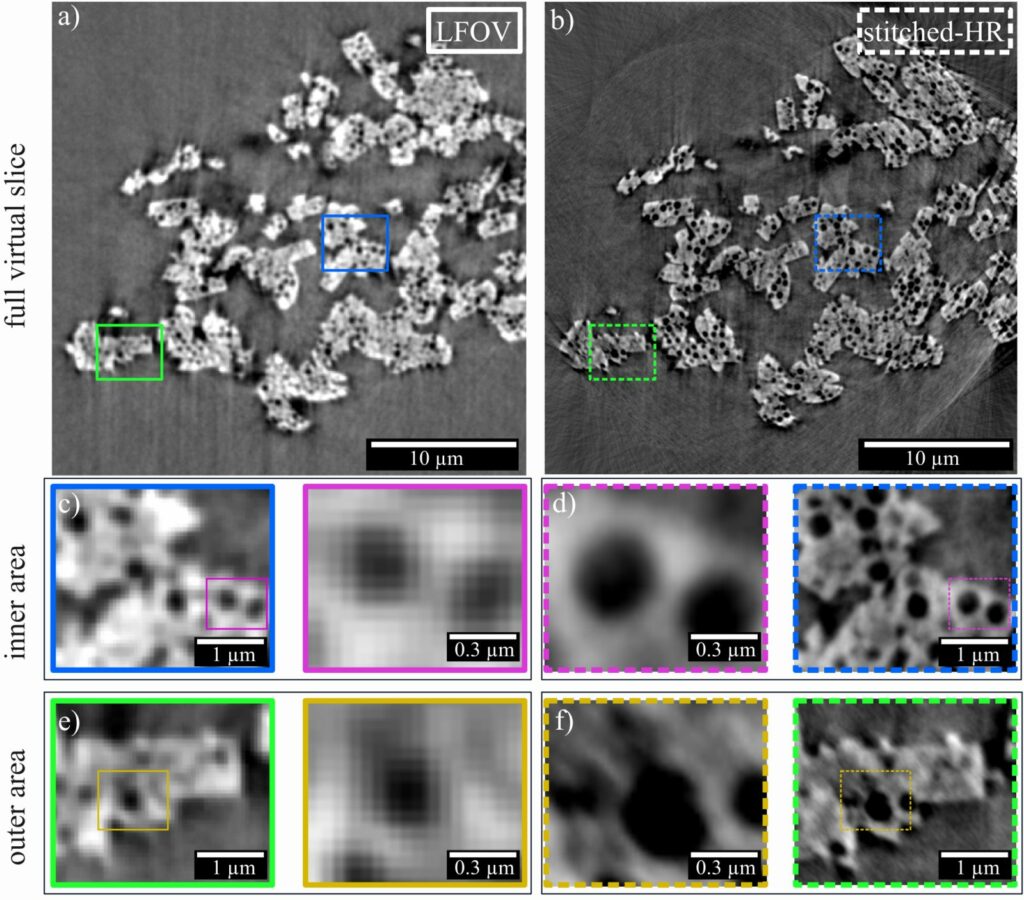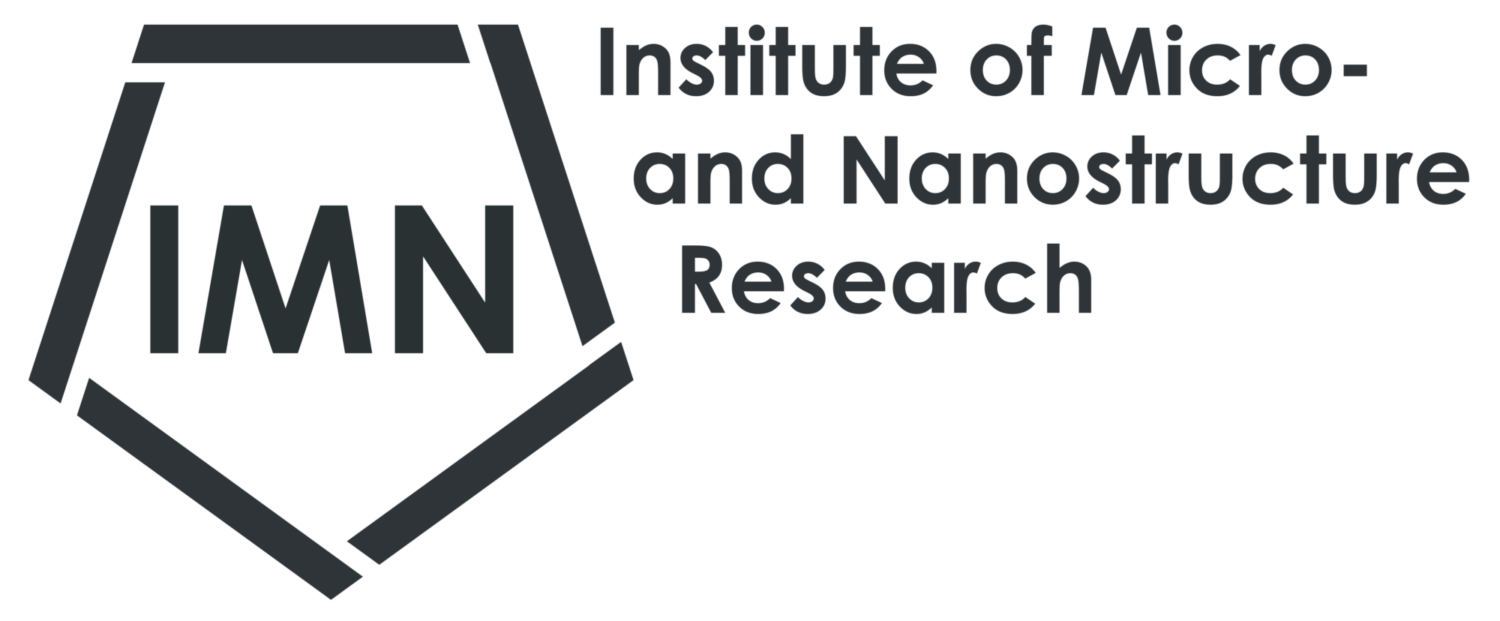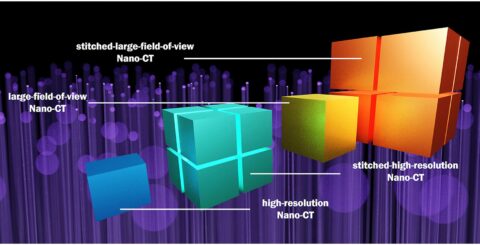Publication on “stitching approach” for lab-based nano-CT
Silvan Englisch and his colleagues from the nanotomography work group recently published a strategy to tackle and overcome the inherent compromise between accessible volume and spatial resolution in nanotomography. The article “Expanding accessible 3D sample size in lab-based X-ray nanotomography without compromising resolution” was published in Precision Engineering as part of the special issue Developments in X-ray computed tomography for precision engineering.
The study presents a ‘stitching’ tomography approach for lab-based nano X-ray computed tomography (nano-CT). Therein, adjacent tilt series of the partly overlapping field of views are subsequently acquired by moving the sample with the microscope stage. The single tilt series are first aligned towards each other and are then stitched and averaged to obtain one tilt series with an enlarged field of view. By first stitching and then reconstructing the tilt series, a 25% larger volume and higher signal-to-noise ratio is obtained, compared to a stitched version of the same single reconstructed volumes. The stitched tomograms, acquired in the ‘high-resolution’ mode of the lab-based X-ray microscope ZEISS Xradia 810 Ultra, show almost no loss in resolution but cover up to ten times the volume in comparison to a single ‘high-resolution’ tomogram.

We showcased the applicability of the ‘stitching’ tomography approach for two porous and low-Z materials in Zernike phase-contrast imaging mode of the X-ray microscope: macroporous zeolite particles and a supported catalytically active liquid metal solutions (SCALMS) system. We utilized Fourier ring and shell correlation to calculate the achievable two- and three-dimensional resolution of the X-ray microscope and the tomographic reconstructions, respectively. The excellent performance of the stitching approach was evaluated by comparing three-dimensional reconstructions of identical sample volumes obtained with and without stitching.
The ‘stitching’ tomography approach is generally applicable to low Z and porous materials, where the accessible field of view should be maximized while maintaining a high spatial resolution, and therefore widens the flexibility and opens up new avenues for studying nanomaterials in three dimensions.
More details are to be found in the Open Access publication:
S. Englisch, J. Wirth, D. Drobek, B. Apeleo Zubiri, E. Spiecker, Expanding accessible 3D sample size in lab-based X-ray nanotomography without compromising resolution. Precision Engineering 2023, 82, 169.

